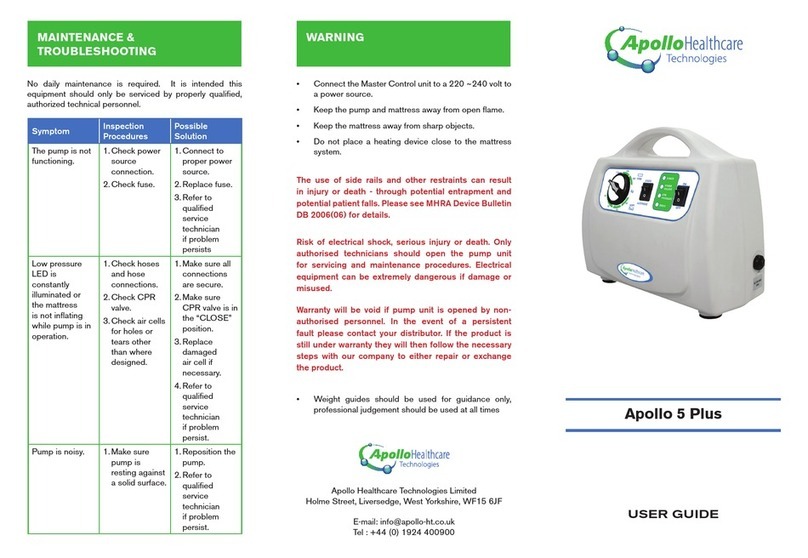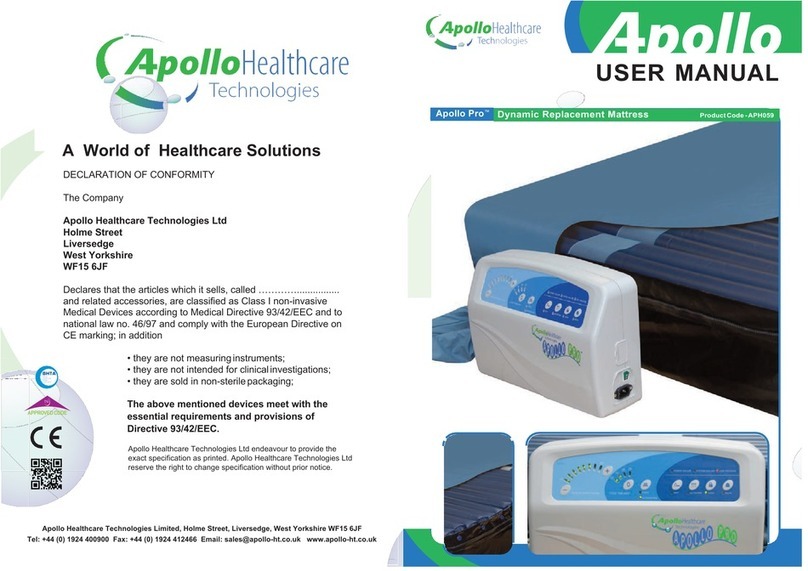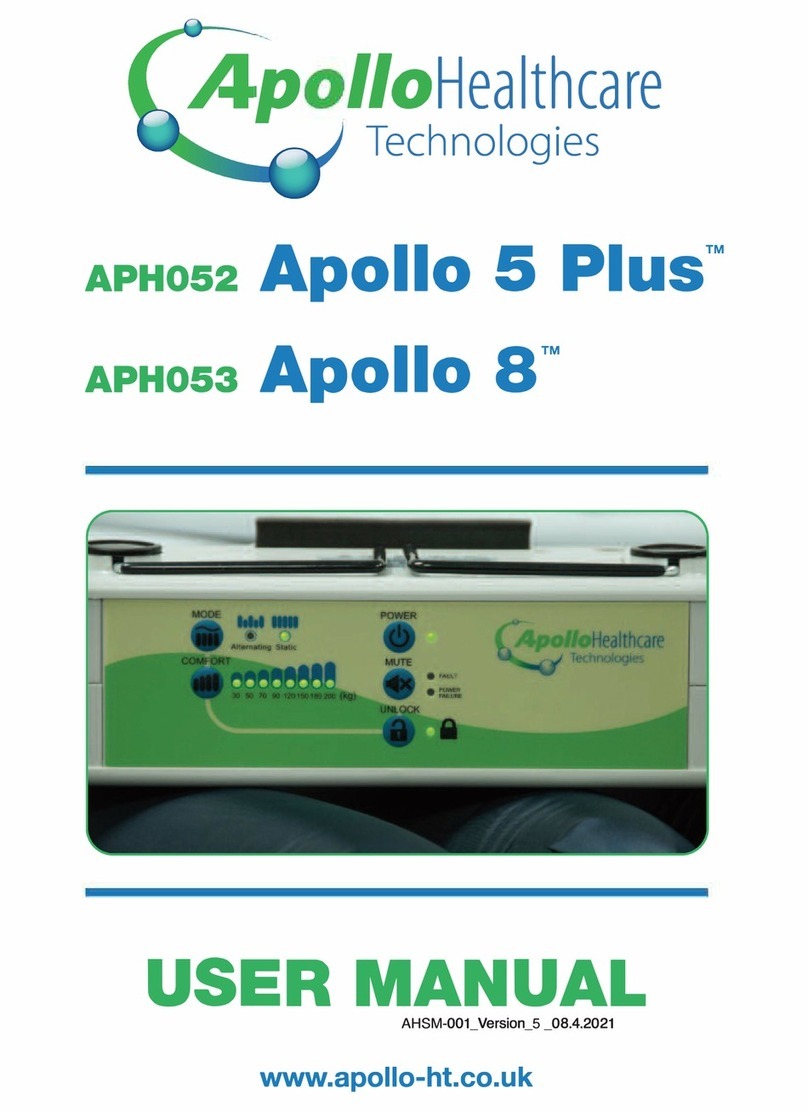
•Make sure that any possible substitute personnel are also sufficiently trained on how to
use the bed correctly.
•In case any additional electric accessories are used such as air compressors for overlay
mattresses, make sure they are properly installed and work correctly. In particular pay
attention to the following:
Make sure all cables, flexible tubes etc are fixed correctly.
Do not use a multiple socket under the bed (possible fire hazard in case of contact
with liquids). If in doubt, please contact the manufacturer of the accessories.
•Make sure all staff complies with the safety warnings.
2.2.3 Safety instructions for the user
•Make sure to be instructed on the safe use of the bed by the owner.
•Before each use check the good condition and the absence of defects in the nursing
bed.
•Make sure there are no obstructions such as furniture or inclinations of the ceiling when
making any adjustments.
•In case any additional electric components are also used such as hoists, reading lamps
or air compressors for overlay mattresses, make sure their cable does not get caught in
the mobile parts of the bed or get damaged.
•Multiple sockets must not be used for connecting any external electrical components.
•If you suspect damage or malfunctioning, immediately disconnect the power plug from
the wall, clearly mark it as “Damaged” and deactivate the nursing bed. Immediately
inform the owner of the bed about this situation. In chapter 6.1 you will find a checklist to
assess the condition of the bed.
Safety warnings for the user
•The power cord must be installed so that when operating the bed it is not
carried away, crushed or damaged by any moving parts.
•Before transport totally remove the plug from the socket.
•When the bed is not used, make sure there is no possibility for the hand control
to fall and get damaged (it must remain attached to the hook). Make sure the cable
cannot be damaged by any moving parts of the nursing bed.
•Place the bed in the lowest position when you leave the patient unattended on the bed.
In so doing, the risk of injuries to the patient when getting on and off the bed is minimized.
•The adjustments can be made only by trained personnel or in the presence of
experienced staff.
•Check the power cord regularly for possible mechanical damages (abrasions, uncovered
wires, bends, dents, etc…) especially in the following cases:
•after each mechanical overload (for example: crushing of the cable with the bed
itself or with a trolley, after strong tractions and bending of the bed with the power
cord plugged in)
•after each change of position/after every movement before inserting the plug
•during the normal operation by the user
•Regularly check that the power cord assembly is properly tightened.






























